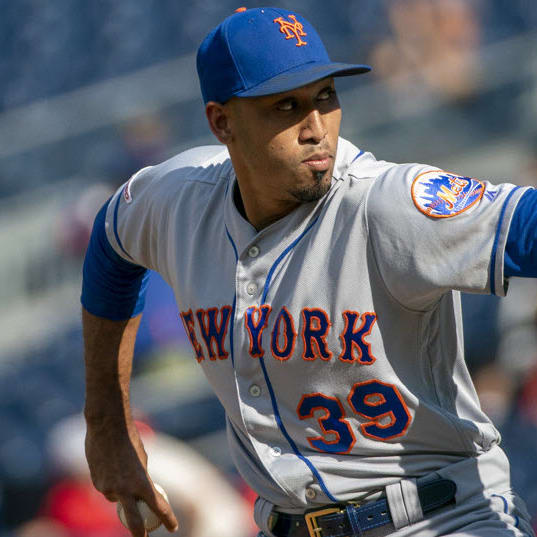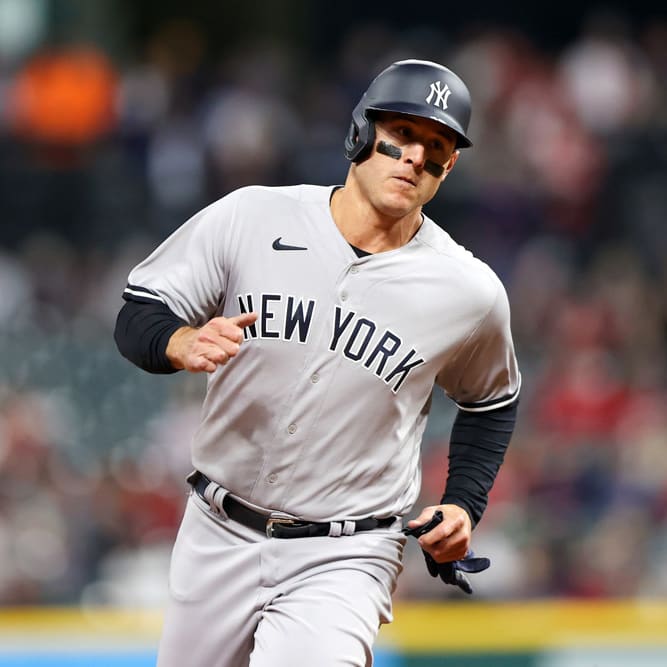This article is part of our Collette Calls series.

I bring this up because you should spend the break looking at the standings for your various teams and deciding which categories you can realistically make noise in the rest of the way. Fifty-nine percent of the fantasy baseball season is over as the 30 teams have played an average of 96 games already this season. A few years back, I wrote a piece discussing the importance of using this time of the season to see where your teams are and what are realistic expectations for production coming out of the break. This year, I want to focus on home runs because it drives three categories and there is an elephant in the room that must be discussed.
For example, if you are counting on 30 homers from your best slugger, understand that has only been done three times: by Jose Bautista in 2010 as well by both J.D. Martinez and Giancarlo Stanton in 2017. Now that we see power

I bring this up because you should spend the break looking at the standings for your various teams and deciding which categories you can realistically make noise in the rest of the way. Fifty-nine percent of the fantasy baseball season is over as the 30 teams have played an average of 96 games already this season. A few years back, I wrote a piece discussing the importance of using this time of the season to see where your teams are and what are realistic expectations for production coming out of the break. This year, I want to focus on home runs because it drives three categories and there is an elephant in the room that must be discussed.
For example, if you are counting on 30 homers from your best slugger, understand that has only been done three times: by Jose Bautista in 2010 as well by both J.D. Martinez and Giancarlo Stanton in 2017. Now that we see power trending back down this year, almost as if the baseballs have been readjusted, expecting 30 homers from someone over the remaining 66 games is borderline insane. The good news is that with the recent years of offensive explosions, the bar is higher for counting categories so more players are doing things their contemporaries did not.
Three years ago, I pointed out just 13 times a player had hit 20 or more home runs after the break. The Baseball-Reference Split Index tells us that 47 players have done that since 2008, 21 th last two seasons. Twenty years ago, it was not that rare to see some guys have that big surge in the second half, but then there was a tremendous drop in 2008. Almost as if some external factor was introduced to the game.

The big second half surges have made a comeback once again almost as if yet another external factor has been introduced to the game. Ten years ago, the Mitchell Report had folks running scared, and last year inflated baseballs were all the rage. This year, given that we have a reduced number of games in the second half, and the power surge is back on a downward trend, this cannot be the linchpin of your comeback plan over the remaining 10 weeks of the season.
Alex Chamberlain at FanGraphs had an interesting piece the other day around this. His work showed that batters are hitting the ball harder in 2018 than they have the previous three seasons. It also showed the highest exit velocity, the highest launch angle, the highest exit velo on fly balls and line drives, and barrels per ball in play. That entire recipe should lead to yet another record season of power, and yet power is down this year.

The league-wide flyball rate is steady, there are more hard-hit balls in play and yet fewer fly balls are leaving the yard, and we are supposed to believe the ball was not changed this offseason? Riiiiight.
The list of players who have hit 20 or more home runs in the second half of a season over the last three years is mostly the type of player we would expect to see on this list; 88 players have hit 20 or more homers in a second half, but just 39 percent of those have done it multiple times. Three players have done it in each of the last two seasons. Two are Justin Upton and Brian Dozier, but only one player has done it in all three.
Nelson Cruz had a monster first half with a .267/.363/.538 batting line as he continues to be an ageless wonder despite moving to Seattle. By wRC+, he is 48 percent better than the league average offensively in 2018, which is right in line with his production the previous three seasons. If he were to hit 20 again this second half, that puts him back over 40 homers for the fourth time in five seasons and likely gets him over the 100 RBI mark for a third consecutive season.
His second halves the last few seasons have been rather monstrous:
| SEASON | G | PA | HR | R | RBI | AVG | OBP | SLG |
| 2015 | 64 | 289 | 23 | 46 | 40 | .298 | .370 | .601 |
| 2016 | 68 | 290 | 20 | 41 | 47 | .295 | .352 | .571 |
| 2017 | 70 | 301 | 22 | 49 | 49 | .283 | .379 | .581 |
He has 65 games to play this season, so not as many as the previous two seasons, but one more than what he had in 2015. The good news is that his data shows that his 2018 indicators are equal or better to what he was doing on the whole in 2015.
| SEASON | BARREL% | EXIT VELO | LAUNCH ANGLE | xwOBAcon | HARD HIT% |
| 2015 | 14 | 92.4 | 9.5 | .482 | 47 |
| 2016 | 17 | 94.4 | 11.1 | .497 | 53 |
| 2017 | 14 | 93.2 | 12.5 | .491 | 49 |
| 2018 | 13 | 94.5 | 15.2 | .490 | 52 |
His expected slugging percentage is 60 points higher than his actual slugging percentage, and while all of the expected extra-base hits are not homers, it points to the hidden value in his bat. The odds are certainly stacked against him doing it a fourth time as only Alex Rodriguez, Sammy Sosa, David Ortiz, Barry Bonds, Carlos Delgado, Jim Thome, Manny Ramirez, Ryan Howard and Vladimir Guerrero have accomplished that. If I wanted to bet which one of these three was the most likely to repeat with 20 second-half home runs, this is my guy.
There are two other players I think you should speculate on for power in the second half, one of whom should come at a discount. Player A has the following characteristics:
• 19th in Barrels Per Plate Appearance
• 6th in average exit velocity
• 2nd in Hard Hit%
• 21st in FB/LD exit velocity
• 23rd in Barrels per Batted Ball Event
His FB/LD exit velocity is higher than Mike Trout's. His average exit velocity is 0.1 mph higher than Giancarlo Stanton's. His percentage of hard hit baseballs is topped by only J.D. Martinez. He has more barrels per plate appearance than Francisco Lindor. His name is Kendrys Morales. Morales has a .246/.320/.436 batting line, so it is easy to overlook how he has done on the whole. His hard hit percentage is up 11 points over last year and nearly 10 points over his previous three-year average. His expected slugging percentage is 141 points above his actual slugging percentage, and even if you factor in some of the work Chamberlain covered in his aforementioned piece, Morales is clearly not seeing all the fruits of his labor at the plate.
He closed off the first half getting hot at the plate with his power after underperforming for most of the spring:

Morales gets to play in a friendly home park as well as friendly run environments while on the road in his division. Some other factors in play is he has 19 games against the likes of the Royals, White Sox and 12 games against the Orioles. He has an additional six games in Yankee Stadium, most of which will come from the left side of the plate. The pieces are there for this to be more than just a dart throw on a board.
The other player I am looking at as a potential 20 homer threat in the second half has these characteristics:
• 8th in FB/LD exit velocity
• 5th in overall average exit velocity
• 23rd in average batted ball distance
• 4th in Hard-Hit percentage
• 38th in Barrels per Plate Appearance
• 31st in Barrels per Batted Ball Event
I am talking about Matt Olson, who owns a .235/.325/.444 batting line. He has spent more time below the league-average line for slugging percentage than above it this year, but when he has been above it, he has been well above it:

His average launch angle is at 18 degrees, which is slightly higher than his 15.7 percent from last season. His expected slugging percentage of .566 is well above his actual of .444 and his .490 expected weighted on based on balls in play (xwOBAcon) is .490, putting him in Nelson Cruz territory. Again, the pieces are here if he can barrel up a few more baseballs the rest of the way because he makes as hard of contact with the baseball as any hitter in the game.










